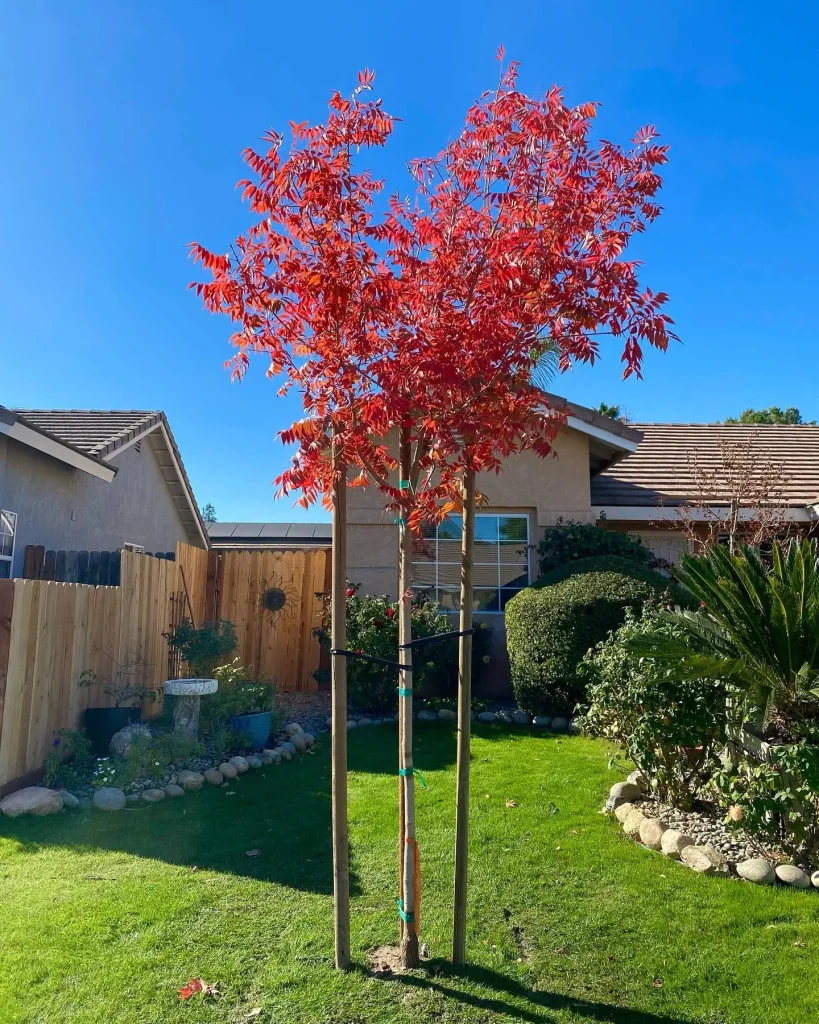I’ve always been drawn to the beauty and elegance of the Redpointe Maple Tree. Over the years, I’ve come to appreciate its unique qualities, growth patterns, and the way it can transform a landscape. This tree is an excellent option for anyone looking to add a touch of natural beauty to their yard or garden. Through my experience, I’ve come across several common questions about the Redpointe Maple Tree, and I’d like to share some answers to help others considering this stunning tree for their own space.
What is a Redpointe Maple Tree?
The Redpointe Maple Tree, scientifically known as Acer Rubrum ‘Frank Jr.’, is a hybrid of the Red Maple. It’s prized for its vibrant red fall foliage and well-shaped canopy. What stands out to me about this tree is its adaptability and beauty, making it a popular choice among landscapers and homeowners alike.
Redpointe Maple Tree Pros and Cons
One of the things I often consider when planting a tree is the balance of pros and cons. The Redpointe Maple Tree has several advantages:
- Pros: This tree is incredibly versatile, thriving in a wide range of soil types, from acidic to slightly alkaline. Its adaptability extends to climates as well, as it can flourish in USDA zones 4 through 9. Another pro is its pest resistance—I’ve noticed that the Redpointe Maple Tree is less prone to diseases compared to other maples. The symmetrical canopy is a major plus, providing excellent shade during the warmer months.
- Cons: On the downside, like many maples, the Redpointe Maple Tree has shallow roots, which can interfere with nearby structures like sidewalks and driveways if planted too close. Additionally, the tree may require regular pruning to maintain its shape and health, which can be a bit labor-intensive.
Redpointe Maple Tree Growth Rate
One of the most frequently asked questions I get is about the growth rate of the Redpointe Maple Tree. In my experience, this tree grows at a medium to fast rate, averaging about 2 feet per year under ideal conditions. This growth rate makes it an appealing choice for those looking to establish a tree canopy quickly. Within a decade, you can expect a mature tree with a strong presence in your landscape.
Redpointe Maple Tree Size
When fully grown, the Redpointe Maple Tree typically reaches a height of 40 to 50 feet, with a spread of about 30 to 40 feet. I find this size to be perfect for creating shade without overwhelming the space. It’s a manageable size for most residential landscapes, and its upright, pyramidal form makes it an attractive focal point.
Redpointe Maple Tree Facts
Here are a few interesting Redpointe Maple Tree facts that I’ve picked up over the years:
- Color: The foliage of the Redpointe Maple Tree turns a brilliant red in the fall, which adds a stunning visual element to any landscape.
- Roots: While the tree has a shallow root system, it’s worth noting that its roots spread widely, which helps stabilize the tree and improve water absorption.
- Longevity: This tree has a long lifespan, with proper care allowing it to thrive for decades.
- Wildlife: I’ve noticed that birds and small animals are attracted to the Redpointe Maple Tree, which enhances the biodiversity of your garden.
How to Care for a Redpointe Maple Tree?
Caring for a Redpointe Maple Tree isn’t overly complicated, but there are a few key things to keep in mind:
- Watering: Consistent watering is essential, especially in the tree’s early years. I make sure to water deeply to encourage root development, particularly during dry spells.
- Soil: While the Redpointe Maple Tree is adaptable, it performs best in moist, well-drained soil. I like to add a layer of mulch around the base to retain moisture and regulate temperature.
- Pruning: Regular pruning is crucial to maintaining the tree’s shape and health. I usually prune in late winter or early spring before new growth starts. Removing dead or diseased branches helps prevent future problems.
- Fertilization: Applying a balanced fertilizer in early spring can give the tree a boost, especially if the soil lacks nutrients.
How to Propagate a Redpointe Maple Tree?
Propagating the Redpointe Maple Tree can be done through seeds or cuttings, though it requires patience. I’ve had the most success with taking softwood cuttings in late spring or early summer. Here’s how I do it:
- Take a cutting that’s about 6 inches long with at least two sets of leaves.
- Dip the cut end in rooting hormone.
- Plant the cutting in a well-draining potting mix.
- Keep it moist and in a shaded area until roots develop.
It usually takes several weeks for roots to form, and once established, you can gradually acclimate the new plant to outdoor conditions.
What to Plant with a Redpointe Maple Tree?
Companion planting is something I always consider, as it can enhance the overall aesthetics of a garden. I recommend planting undergrowth like ferns, hostas, or shade-tolerant ground covers like ajuga or pachysandra around the base of a Redpointe Maple Tree. These plants complement the tree’s canopy and provide a layered, textured look to the garden.
Redpointe Maple Tree: Final Thoughts
In my experience, the Redpointe Maple Tree is a fantastic addition to any landscape. Its vibrant fall color, fast growth rate, and manageable size make it a versatile choice for a variety of spaces. While it has its challenges—such as shallow roots and the need for regular maintenance—the benefits far outweigh the drawbacks. Whether you’re looking to add shade, visual interest, or support local wildlife, the Redpointe Maple Tree is a solid investment for your garden.
Understanding the Redpointe Maple Tree’s characteristics and needs is key to ensuring it thrives in your landscape. With proper care and attention, it will reward you with years of beauty and shade, becoming a central feature of your outdoor space.
If i die, water my plants!


